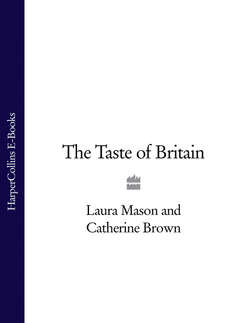Читать книгу The Taste of Britain - Hugh Fearnley-Whittingstall - Страница 91
HISTORY:
ОглавлениеThe breed developed in response to farming conditions of the 1800s which required a hardy animal that could flourish on a varied diet. The Severn Valley in which the race evolved is a cheese and cider region and excess whey and windfall apples formed part of its diet, as well as household and garden waste. It is sometimes referred to as an orchard pig, because of where it prospered. Gloucestershire Old Spots were first noted in the early twentieth century, when the Breed Society was formed. It was then talked of as an ancient breed and the word ‘Old’ has always been part of the name, implying a long history. A Gloucester pig was noted in the 1850s but was described as white with large wattles. It is possible the breed arose from these Gloucesters crossed with Saddle-backs or unimproved Berkshires, black animals whose genes may have contributed the spots.
A drive towards home production of bacon by the British government in the 1930s led to a decline in numbers of Old Spots. It is slower maturing than improved animals and the spots were disliked. A trend towards leaner meat also worked against its use for pork. Breeders have eliminated all but a token spot. In the 1970s, renewed interest in rare breeds led to conservation of breeding stocks and reintroduction of old strains to modern farming and the food chain. This has been quite successful with Gloucestershire Old Spots.
